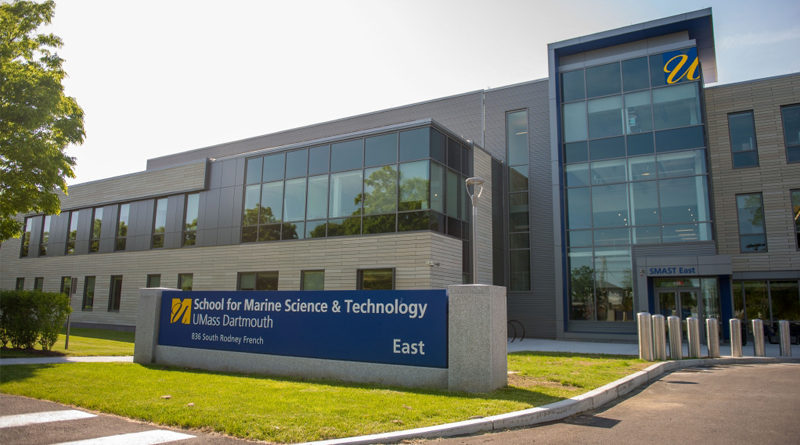UMass Dartmouth Building Earns LEED Silver
By Aziza Jackson
NEW BEDFORD, Mass. — The University of Massachusetts Dartmouth’s School for Marine Science & Technology (SMAST) recently announced that its East building in New Bedford has been awarded LEED Silver certification. The LEED rating system, developed by the U.S Green Building Council (USGBC), is the foremost program for buildings, homes, and communities that are designed, constructed, maintained, and operated for improved environmental and human health performance.
“Achieving this LEED Silver certification is the culmination of the hard efforts of a terrific design and construction team working in collaboration with the University, UMass Building Authority and Mass Department of Capital Asset Management,” said Steven E. Lohrenz, Dean of SMAST. “The project has provided much-needed facilities for advancing education and research about our oceans and doing it in an environmentally responsible manner.”
SMAST is nationally and internationally renowned for research and education in marine sciences, ocean technology, climate change, offshore wind, and fisheries management and sustainability. SMAST offers educational and research programs in the heart of New Bedford, the nation’s No. 1 fishing port. SMAST offers a wide array of choices for advanced degrees in marine science, with emphasis areas in ocean sciences, fisheries sciences, ocean technology, marine resource economics, and marine policy.
The East building, located at 836 South Rodney French Blvd., opened fall of 2017 and tripled SMAST’s presence in New Bedford with the $55 million, 64,000-square-foot building. Designed by Boston-based architecture firm Ellenzweig, the destination space for marine science includes flexible wet and dry labs, a state-of-the-art computational facility, classroom space, breakrooms, high-bay storage for equipment, conferencing space, and a temperature-controlled seawater lab. The seawater lab offers various water conditions to address current and future research initiatives requiring a range of water temperatures and degrees of filtration. The Massachusetts Division of Marine Fisheries and collaborated with SMAST on the space, which comprises marine scientists, students, and staff.
The building achieved LEED certification for implementing practical and measurable strategies and solutions aimed at achieving high performance in sustainable site development, water savings, energy efficiency, materials selection, and indoor environmental quality.
LEED is the foremost program for the design, construction, and operation of green buildings. More than 92,000 commercial projects are currently participating in LEED, comprising more than 19.3 billion total commercial square feet of construction space in all 50 states and more than 167 countries and territories.
“Achieving LEED certification is more than implementing sustainable practices. It represents a commitment to making the world a better place and influencing others to do better,” said Mahesh Ramanujam, president, and CEO, USGBC. “Given the extraordinary importance of climate protection and the central role of the building industry in that effort, SMAST East demonstrates their leadership through their LEED certification of Silver.”
This satisfaction also meets the intentions of UMass Dartmouth’s Climate Action Plan that consists of several strategies and additions to already existing measures for carbon reduction. Originally drafted by the Office of Campus and Community Sustainability, this long-term plan is meant to ensure that the campus reduces its carbon footprint 20 percent by 2012, 40 percent by 2020, and 80 percent by 2050

